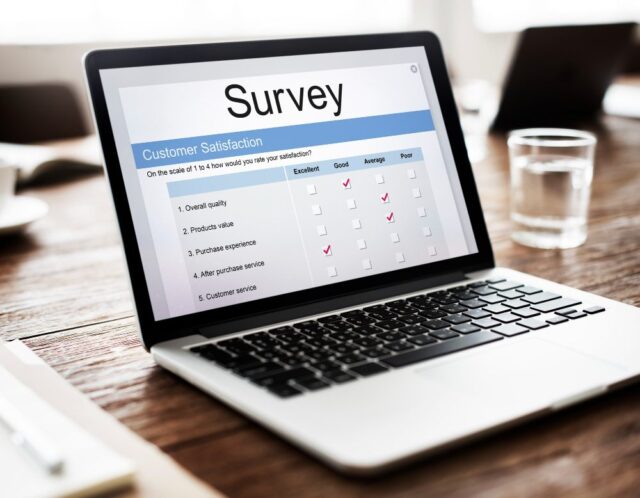In today’s competitive landscape, understanding customer needs and preferences is crucial for business success. One effective way to gather this valuable information is through interactive surveys. Unlike traditional surveys, interactive surveys engage customers in a dynamic manner, making the feedback process more enjoyable and yielding higher response rates. In this blog, we’ll explore how to create interactive surveys that enhance customer feedback and contribute to informed decision-making.

Table of Contents
ToggleWhy Use Interactive Surveys?
1. Increased Engagement
Interactive surveys capture attention through visually appealing designs, engaging questions, and multimedia elements. This heightened engagement can lead to higher response rates compared to static surveys.
2. Better Data Quality
Customers are more likely to provide thoughtful and detailed feedback when participating in an interactive survey. This can result in richer data that offers deeper insights into customer opinions and preferences.
3. Enhanced User Experience
An interactive survey can make the feedback process feel less tedious and more enjoyable for respondents. By incorporating gamification elements, such as progress bars and rewards, you can create a positive experience that encourages participation.
Steps to Create Interactive Surveys
1. Define Your Goals
Before creating your survey, clearly outline what you want to achieve. Consider the following:
- What specific information do you want to gather from your customers?
- How will you use the feedback to improve your products or services?
- Who is your target audience for the survey?
Having well-defined goals will help guide your survey design and question selection.
2. Choose the Right Survey Tool
Selecting the right survey tool is essential for creating interactive surveys. Look for platforms that offer customizable templates, multimedia support, and analytics features. Some popular options include:
- SurveyMonkey
- Typeform
- Google Forms
- Qualtrics
Evaluate the features of each tool to determine which best suits your needs.
3. Craft Engaging Questions
The quality of your questions plays a significant role in the effectiveness of your survey. Here are some tips for crafting engaging questions:
- Use a Mix of Question Types: Incorporate multiple-choice, rating scale, and open-ended questions to keep respondents engaged.
- Be Clear and Concise: Avoid jargon and complex language. Ensure your questions are easy to understand and answer.
- Focus on Customer Experience: Frame questions around the customer’s experience with your product or service. For example, “How satisfied are you with your recent purchase?” or “What features do you wish to see in our next product?”
4. Incorporate Visual Elements
Adding visual elements to your survey can enhance engagement and make it more enjoyable for respondents. Consider the following:
- Images and Videos: Use images or short videos to illustrate questions or showcase products.
- Color and Design: Utilize a visually appealing design that aligns with your brand. Choose colors that are easy on the eyes and complement your brand identity.
- Progress Indicators: Show respondents how far along they are in the survey with a progress bar. This helps manage expectations and encourages completion.
5. Add Gamification Elements
Gamification can make your survey more interactive and enjoyable. Here are some ideas:
- Quizzes and Challenges: Turn questions into quizzes or challenges, rewarding participants with points or badges for completing sections.
- Instant Feedback: Provide respondents with instant feedback based on their answers. For example, if they rate a product highly, you might thank them for their loyalty and ask for more detailed feedback.
6. Test Your Survey
Before launching your survey, conduct a test run to identify any issues or areas for improvement. Share the survey with a small group of colleagues or friends and gather feedback on:
- Question clarity
- Technical functionality
- Overall user experience
Make necessary adjustments based on the feedback you receive.
7. Promote Your Survey
To gather responses, promote your survey through various channels:
- Email Campaigns: Send targeted emails to your customer base, inviting them to participate in the survey.
- Social Media: Share your survey on social media platforms, encouraging followers to provide feedback.
- Website Integration: Embed the survey on your website or use pop-up prompts to capture responses from visitors.
8. Analyze the Results
Once your survey is complete, analyze the data to extract valuable insights:
- Identify Trends: Look for patterns in the responses that can inform your business decisions.
- Segment Responses: Analyze feedback based on customer demographics or behaviors to tailor your strategies effectively.
- Make Data-Driven Decisions: Use the insights gained from the survey to implement changes that enhance customer satisfaction and improve your products or services.
Conclusion
Creating interactive surveys for customer feedback is an effective way to engage your audience, gather valuable insights, and make informed decisions. By defining clear goals, choosing the right tools, crafting engaging questions, and incorporating visual and gamification elements, you can design surveys that not only capture attention but also yield meaningful feedback. Start implementing these strategies today to enhance your understanding of customer needs and drive business success!


No responses yet